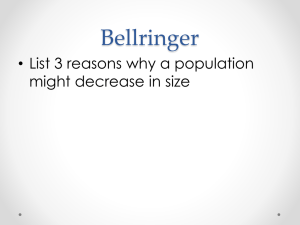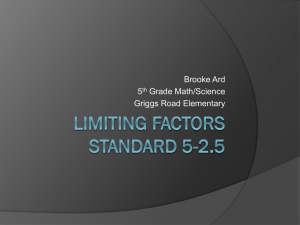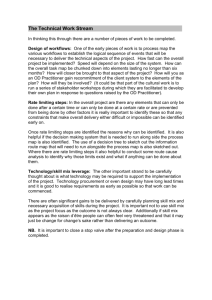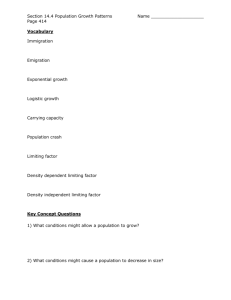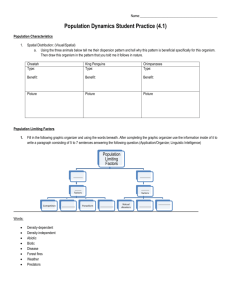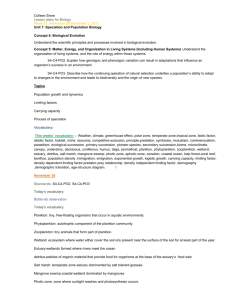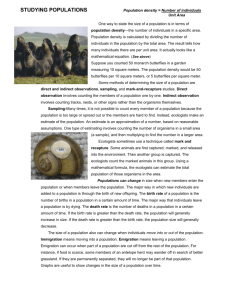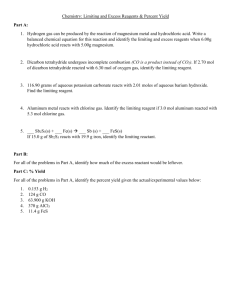density-dependent limiting factors
advertisement
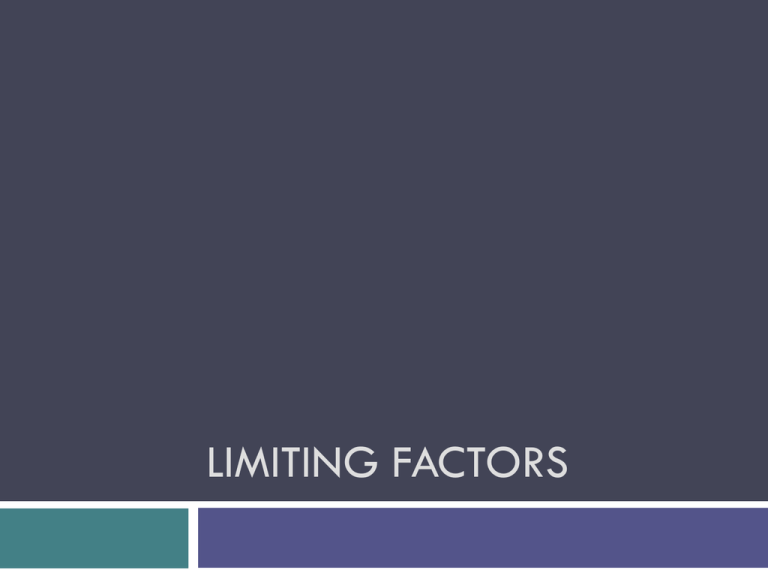
LIMITING FACTORS Levels of Organization Overview Cells Tissues Organs Organ Systems Organisms Populations Communities Ecosystems Biome Organisms-Biomes terms to know Organism One individual of a single species. Population Groups of individuals that belong to the same species and live in the same area. Community Groups of different populations that live together in a defined area Ecosystem Collection of all the organisms that live in a particular place, together with their abiotic (nonliving) , or physical environment. Biome Multiple ecosystems with similar characteristics in the same geographical area. Levels of Organization Examples Organism Beavers, cattails, frogs, cranes, deer, trees, owls, etc. Population Groups of beavers, cattails, kudzu, raccoons, frogs, trees, etc. Community The deer, trees, foxes, raccoons together. Ecosystem Owl, tree, kudzu, squirrel, along with the soil, air, temperature, rainfall, etc. What is a population? Population all the individuals of a species that live together in one place at one time. Carrying Capacity The maximum population size that an environment can sustain. How is population affected? Factors affecting population density Increase: The number of births Immigration Decrease The number of deaths Emigration Populations do not usually grow without limits. Their growth is limited by things such as predation, disease and availability of resources. These factors are grouped together as Density-Dependent and Density-Independent. Density-Dependent Limiting Factors A limiting factor that depends on population size is called a densitydependant limiting factor. Examples of densitydependent limiting factors (DDLF) include competition, predation, parasitism/disease, crowding Usually Biotic Factors Living things Exs. Competition for food, water, shelter Spread of disease (bacterial or viral) and parasites Predator/prey relationships Examples of Density Dependent Factors Crowding Organisms need a certain amount of space to nest and hunt, when that space is limited it can cause stress to the immune system and hormone levels Predation Predator/Prey relationships Parasitism and Disease Caused by parasites ranging from microscopic bacteria to very large tapeworms. Competition When populations become crowded, organisms compete with one another for food, water, space, sunlight and other essentials of life. Density-Independent Limiting Factors A limiting factor that DOES NOT depend on population size is called a densityindependant limiting factor. Examples of densitydependent limiting factors (DILF) include things like natural disasters and human interactions Usually Abiotic Factors Non-Living things Natural disasters Weather; hurricanes, tornadoes, floods, drought. Earthquakes, volcanoes, avalanches, mudslides. Fires Human activity plowing, clear cutting, slash and burn, use of toxins on crops)
